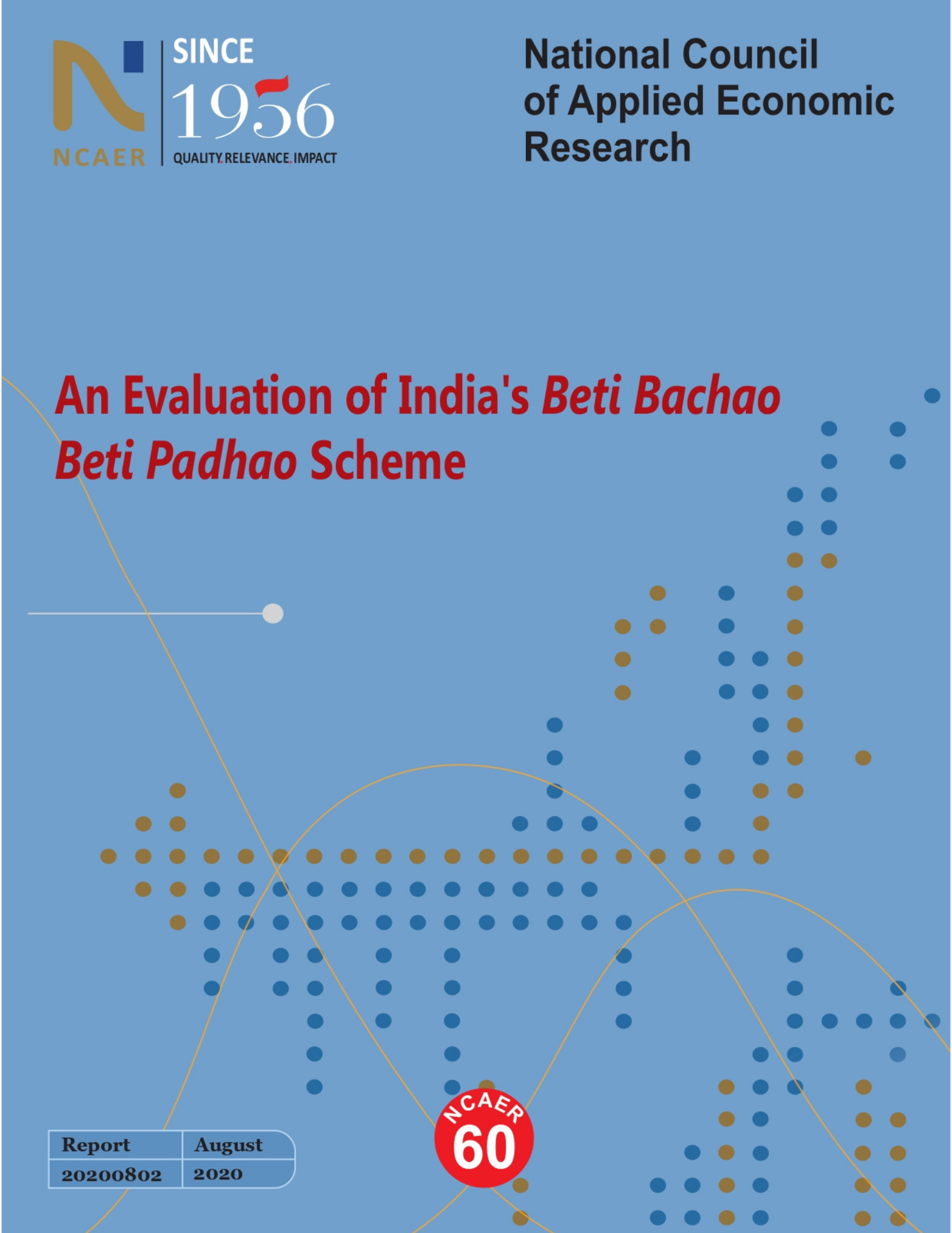An Evaluation of India's Beti Bachao Beti Padhao Scheme
Rajesh Kumar Jaiswal
Anushree Sinha
Poonam Dhawan
Ramamani Sundar
Arpita Alawadhi
Vishal Rangarajan
August 2020
The Government of India launched the Beti Bachao Beti Padhao (BBBP) scheme in January 2015. The key objectives of the scheme are to: (i) prevent gender-biased sex-selective elimination; (ii) ensure the survival and protection of the girl child; and (iii) promote education and participation of the girl child. The Ministry of Women and Child Development (MWCD) entrusted the National Council of Applied Economic Research (NCAER) with the task of evaluating whether the campaigns under the scheme had been able to create adequate awareness among the target audience and to bring about the desired behavioural changes for ameliorating the gender gap. A survey was carried out in both urban and rural areas of the selected 14 States. A total sample of 816 households was selected from the 17 districts of these 14 States based on their CSR rankings. The target group for the field survey are: a) newly married couples, pregnant and lactating mothers; b) medical doctors/practitioners and school teachers; c) officials of Panchayati Raj Institutions; and d) District Programme Officers. The study found that the campaign for the BBBP scheme has been successful in creating awareness in general. The study also highlights some key constraints regarding girls education. The non-availability of functional and clean toilet facilities for girls in most schools discourages them from attending school regularly. Consequently, many of them record erratic attendance or drop out of school completely. This leads to a gender gap in education, which, in turn, adversely impacts gender equality.
National Growth and Macroeconomic Centre
States, Sectors, Surveys, and Impact Evaluation






